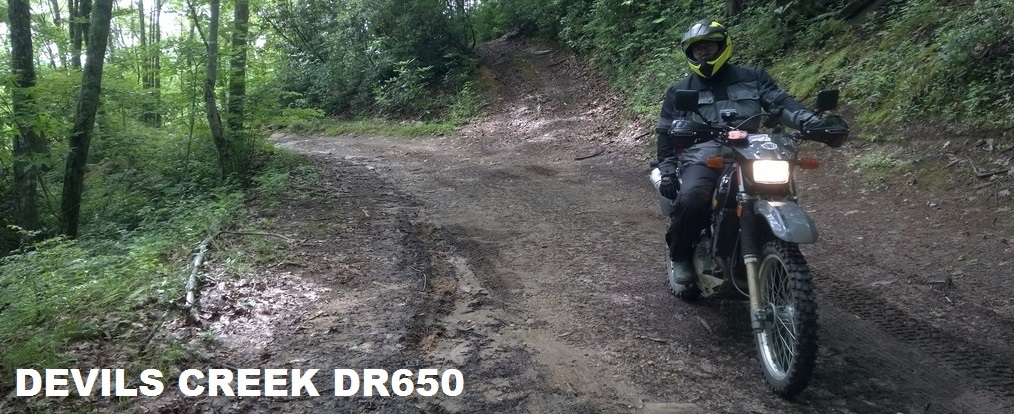- A selection of Jets: A number of different jets sizes for different applications. The JD Kit came with Mikuni #140, #145, #150, #155 Main Jets and a replacement #42.5 Pilot Jet. With all those jets, the Kit supports future mods.
- Needles: Often kits include a motorcycle specific, or selection, of needles with different lengths and tappers. The JD Kit came with two height-adjustable needles with tappers to fit differing climates and altitudes.
- Guidance on tuning parts selection.
Essentially, tuning/jetting a carburetor encompasses configuring the fueling flow level (i.e. amount of gas) and the fueling ratio (i.e. the mix of fuel to air, usually around 1 part fuel to 15 part air) to a motorcycle in either it's stock form or modified form. Tuning/jetting involves selecting a combination of jets, needle, needle height, and fueling mixture. In some instances, it may also other involve physical modifications to the carburetor (e.g. the ProCycle Kit recommends drilling a small hole in the slide to adjust the CV vacuum level).
- No-Modifications: It is widely believed (including by me) that the stock configuration of naturally aspirated motorcycles is designed too heavily in response to governmental fuel and emission standards resulting an excessively lean fueling mixtures. Tuning a richer mix (more fuel + less air) improves engine performance, but at the cost of fuel efficiency. I jetted my new, fresh off the showroom floor 2016 DR650 for this reason.
- Modifications: Jetting is considered appropriate and may, in fact, be necessary when modifications are made to the motorcycle design. The BST40 is configured (fitted, so to speak) to work with the stock motorcycle and all it's parts. However, there are changes to the motorcycle that can interrupt that stock configuration (e.g. exhaust, air box, motor cams). The most common modifications are (i) air box modifications and (ii) installing performance enhancing exhaust systems. Modifications have the affect of changing the engine's needs in terms of the amount of fuel, the mix of fuel/air or both. Tuning and jetting adjusts the carburetor to accommodate a better running powertrain.
- Horsepower: NO! As some may suggest, jetting does not increase horsepower. Perhaps whatever modification giving rise to the jetting increases horses. But the jetting itself only reconfigures the carburetor to allow those performance enhancing modifications to work on the motorcycle.
As it relates to my 2012 DR650, both the snorkel and airbox cover had been removed. Carburetor tuning changes by prior owners that I encountered, presumably to adjust the mix for the air box mods, included (i) increasing the main jet from a stock #140 to a #160 (increasing jet aperture and, therefore, fuel amount) and (ii) increasing the fuel to air mix to "richer" by turning the fuel mix screw out from 1 1/2 turns (stock configuration) to 2 1/4 turns. Both of these tuning actions pointed to enriching the fueling mix to compensation for the additional airflow from the modified airbox.
I decided to replace the airbox cover with a new cover due to the dusty/sandy conditions that I encounter on the trails, but left the snorkel off. In addition, the motorcycle had a stutter/sputter in the upper end of the powertrain that was clearly a fueling mixture problem that needed correction. The condition is a symptom of an overly rich mixture. For these combined conditions, I set out to jet and tune the BST40.
As previously mentioned, I used the James Dean JDJetting Kit #JDS013 on both my 2016 and 2012 Suzuki DR650s; around $85 and available at ProCycle.
Here is a link to the Instructions from the JDS013 Kit. Kit components are:
- Main Jets (Mikuni Brand): 140 (Stock), 145, 150,155
- Pilot Jet (Mikuni Brand): 42.5
- Needles: Blue Coded (Rich), Red Coded (Lean)
- Needle Clip
- 4 Replacement Cap Screws
- Drill Bit for Slide Modification
My final configuration was:
- 145 Main Jet
- 42.5 Pilot Jet
- Red Coded Needle @ #3 Groove
- 1.5 Turns on the Fueling Screw (note 1.5 is stock)
6. Jet Selection: Jet selection governs the amount of fuel based on the size of its aperture (i.e. the hole going through the middle). Generally, the goal of jet selection is ultimately to select the smallest Main Jet (smallest aperture) that supports fueling adjustments necessary for the modifications or objectives. There may, in fact be a range of main jet sizes that seem to work, but fine tuning is going to result in better performance if the smallest in that range can be selected. The fueling screw, as discussed in the next point, can help identify the best jet for the job.
6. Fueling Screw: The fueling screw governs the air/fuel mixture (turn out = more fuel = richer; turn in = more air = leaner). Fueling mix is the "finest" of fine tuning the carburetor. It should be noted that, irrespective of the modifications, the fueling screw should generally be kept at or near the stock setting. In the case of the Suzuki DR650, that setting is 1 1/2 turns out (also the recommended initial setting in the JDJetting Kit). If the tuning requires turning the screw too far out or in from that setting (say 1/2 turn either way), the jet selection is probably incorrect. For example, if I needed to turn the fueling screw out 2 1/2 turns to zero in on a #145 Main Jet, I would bump the jet to a #150 (more fuel flow) and put the turns back to 1 1/2.
Overall, tuning the BST40 is a process of understanding the affects that modifications have on the motorcycles performance along the entire powerband and then tuning them in. It's important to understand how the individual tuning elements interact in achieving the proper amount of fuel and the proper mixture of air and fuel ... and not going too far.










